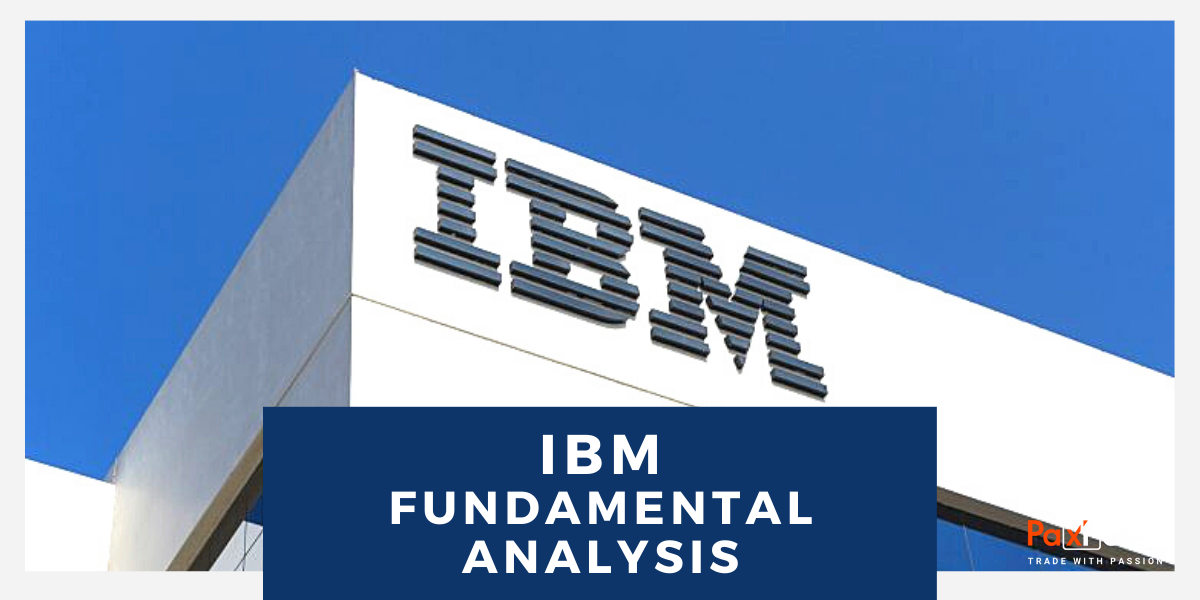
Source: PaxForex Premium Analytics Portal, Fundamental Insight
IBM has been a major disappointment for long-term investors, with its stock plummeting nearly 40% over the past decade. Even when accounting for reinvested dividends, the company has yielded a negative total return of around 4%. In contrast, the S&P 500 has provided a total return of almost 220% during the same period.
The decline in IBM's stock can be attributed to the lackluster growth in its traditional IT services, hardware, and business software divisions, which has offset the stronger growth in its newer cloud services. The company's years of layoffs, cost-cutting measures, and unwise stock buybacks have further hindered its ability to compete in the challenging cloud services market.
Despite trading at 14 times projected earnings and offering a substantial dividend yield of 5.1%, many investors remain skeptical of IBM's value. However, upon closer examination, we can uncover three key facts that could potentially alter one's perception of this century-old company.
- IBM is finally growing again
In April 2020, IBM cloud chief Arvind Krishna succeeded Ginny Rometty as the company's new CEO. His first major step was to spin off IBM's Managed Infrastructure division, which had long been lying dead weight on top-line growth, into a new company called Kyndryl. That spin-off was completed in November 2021, after which IBM restructured its business into three simpler segments: software (41% of revenue in 2022), consulting (32%), and infrastructure (25%).
All three lines of business grew in 2022. Software and consulting revenues grew 7%, and infrastructure revenues grew 8%. On a going concern basis, IBM's total revenue for the full year grew 6% to $60.5 billion, compared to a growth of 4% in 2021. Analysts expect the company's revenue to grow 4% to $82.7 billion in 2023, matching Krishna's expectation of "mid-single digit" revenue growth over the long term.
- The company's cloud business continues to grow
Much of that growth is driven by hybrid cloud revenue, which grew 11% in 2022 and accounted for 37% of IBM's total revenue. Hybrid cloud services handle data that is transferred between public cloud services - such as Amazon.com's Amazon Web Services (AWS) and Microsoft's Azure - and private clouds on site. Hybrid cloud deployments tend to be popular among large and legacy organizations that aren't ready to move all their data to public cloud platforms.
IBM's major hybrid cloud growth was driven by its $34 billion acquisition of Red Hat in 2019. Red Hat's open-source software is compatible with a wide range of cloud platforms and enterprise applications, and that versatility allows IBM to wedge its hybrid cloud data services between private and public clouds.
By freeing up this niche, IBM doesn't have to contend with AWS, Azure, Alphabet's Google Cloud, and other major cloud infrastructure platforms. Instead, the rising tide should lift all boats as more companies tie their private clouds to these public cloud platforms using IBM's services.
- IBM still needs to separate its business from Kyndryl
IBM parted ways with Kyndryl, but it still sells many of its products and services to a former subsidiary. In fact, IBM's Kyndryl sales still account for four percentage points of total sales growth in 2022 -- so without the Kyndryl business, the company's sales would have grown by only 2 percent.
The current situation is concerning because, following its separation from IBM, Kyndryl now has the freedom to purchase and gradually replace IBM's products and services. Kyndryl has already established cloud partnerships with major players such as Amazon, Microsoft, and Google, and these lucrative deals could significantly reduce its reliance on its former parent company.
Despite facing numerous challenges in the short term, IBM has evolved from the company that struggled over the last decade with stagnant sales. The "new" IBM can be likened to Oracle, another aging tech giant that has successfully reinvigorated its business by expanding its cloud services in recent years.
IBM's growth potential may be limited until the macroeconomic situation improves, and the company reduces its dependence on Kyndryl. However, its low valuations and high returns could also serve as a "bottom" under its stock, making it a safe option to purchase during a prolonged bear market. Nevertheless, investors should remain realistic about its near-term returns.
As long as the price is above 123.00, follow the recommendations below:
- Time frame: D1
- Recommendation: long position
- Entry point: 126.15
- Take Profit 1: 130.00
- Take Profit 2: 137.00
Alternative scenario:
If the level of 123.00 is broken-down, follow the recommendations below:
- Time frame: D1
- Recommendation: long position
- Entry point: 123.00
- Take Profit 1: 120.00
- Take Profit 2: 115.00













